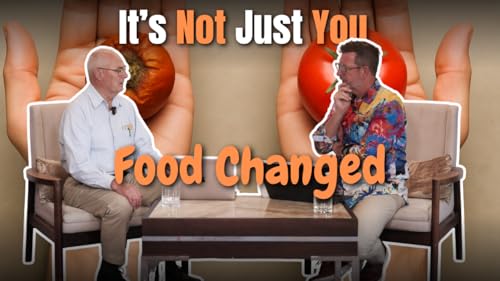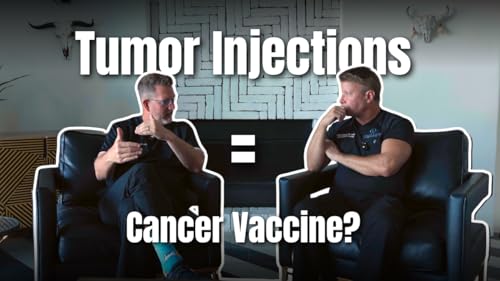📬 Join Dr. Goodyear’s Newsletter ➡️ https://pre-scribed.com/subscribe/
Episode Overview
What if you could inject a tumor and ignite the immune system—not just locally, but systemically? In this episode of the Prescribed Podcast, Dr. Nathan Goodyear sits down with Dr. Jason Williams, founder of the Williams Cancer Institute and pioneer of intratumoral immunotherapy. Together, they unpack a landmark 2025 study on Fc-optimized CD40 agonists and explore how direct injection into tumors is transforming cancer treatment. From tertiary lymphoid structures to pulsed electric fields (PEFs), this isn’t just a conversation—it’s a call to action for patients, clinicians, and researchers ready to revolutionize cancer care.
📌 Key Takeaways CD40 is the Swiss Army knife of immunotherapy. It primes T cells, activates dendritic cells, reprograms macrophages, and supports B-cell immunity.
Systemic CD40 delivery is toxic. Intravenous administration causes cytokine storms, liver injury, and platelet loss.
Intratumoral injection avoids toxicity. Local delivery reprograms the tumor microenvironment while still driving systemic immune responses.
Phase I trial showed promise. Among 12 patients, 20% had complete responses and 60% achieved stable disease—without dose-limiting toxicities.
Abscopal effect observed. Injected tumors triggered regression in non-injected lesions.
TLS are immune training camps. These tertiary lymphoid structures enable long-term immune memory and stronger systemic antitumor activity.
PEF boosts immunity. Pulsed electric fields induce tumor death, enhance antigen release, and synergize with CD40.
Combination is key. Checkpoint inhibitors, chemo-radiation, and ablation therapies amplify intratumoral CD40’s effects.
Adaptive precision matters. Not all patients respond the same; tailored multi-agent regimens outperform single drugs.
Williams Cancer Institute leads innovation. Dr. Williams is already applying these strategies in clinical practice today.
⏱️ Timestamps
0:00 - Episode Intro
0:31 - Welcoming Dr. Jason Williams
1:16 - CD40: the “Swiss Army knife”
3:12 - How CD40 activates immunity
5:23 - Early CD40 research timeline
7:01 - Toxicities of systemic delivery
9:06 - Shift to intratumoral injection
10:52 - Clinical use at Williams Cancer Institute
15:59 - TLS as immune bases
17:43 - Comparing toxicity profiles
23:41 - The abscopal effect explained
29:18 - Intratumoral CD40 as vaccine
32:08 - Phase I trial results
37:07 - Case study: melanoma response
40:02 - Why TLS drive durable outcomes
44:20 - Designing effective combinations
50:10 - From trial data to clinic
53:43 - Phase II directions
55:01 - Cold to hot tumors with CD40 + PEF
58:12 - Closing reflections
🔔 Subscribe for more evidence-based conversations on the future of functional medicine.
📚 Resources & Links
Knorr, D. A., Dahan, R., & Ravetch, J. V. (2018).PNAS, 115(43), 11048–11053. https://doi.org/10.1073/pnas.1810566115
Osorio, J. C., Knorr, D. A., Weitzenfeld, P., et al. (2025).Cancer Cell. https://doi.org/10.1016/j.ccell.2025.07.013
Jimenez, M., Fernandez, J. M., & Krimsky, W. S. (2024). Respiratory Medicine Case Reports, 49, 102018. https://doi.org/10.1016/j.rmcr.2024.102018
Iding, J., VanderLaan, P., Jimenez, M., et al. (2022). JITC, 10. https://doi.org/10.1136/jitc-2022-SITC2022.0702
▶️ More episodes + show notes: https://prescribedpodcast.com
🧬 Dr. Jason Williams – Williams Cancer Institute: https://williamscancerinstitute.com
📚 Learn more about integrative oncology: https://pre-scribed.com
📞 Schedule a consultation: https://williamscancerinstitute.com
🏥 Visit Dr. Goodyear’s clinic: https://www.drgoodyear.com
📸 Follow us on Socials: https://linktr.ee/doctornathangoodyear
 39 mins
39 mins 57 mins
57 mins Oct 30 202536 mins
Oct 30 202536 mins 49 mins
49 mins 15 mins
15 mins 44 mins
44 mins 59 mins
59 mins 32 mins
32 mins

